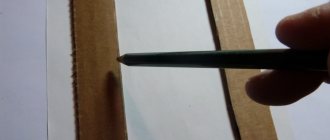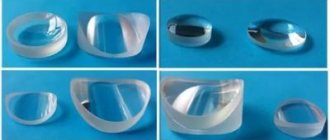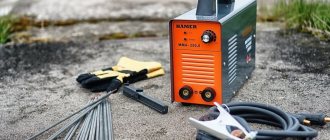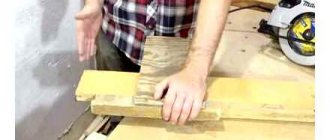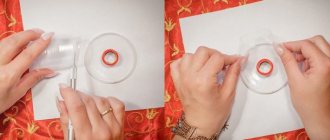Ease of use
One of the key performance characteristics of a bulletproof vest is its weight, because it has to be worn for quite a long time (up to 24 hours). This creates a serious burden on the musculoskeletal system. The back and some joints are especially affected. Exceeding the established standards will most likely lead to disturbances in the functioning of the joint system - osteochondrosis, scoliosis, displacement of intervertebral discs and other diseases.
To prevent possible problems, manufacturers of passive protective equipment use special materials. Among them are the already mentioned 45X2NMFBA armored steel, aramid fibers (including Kevlar), polymer materials (pressed polyethylene) and composite ceramics. They have sufficient strength and at the same time lower density compared to most materials used in civil industry.
Let’s compare the density of the heaviest material used in industrial products—armored steel—and other metals that are proposed for use by “inventors.”
- Bronestal 45Х2НМФВА - no more than 9.13 g/cm2;
- Steel 25 - 7.82 g/cm2;
- Titan VT22 - 4.6 g/cm2.
As you can see, armored steel really has the largest mass. However, one should not rush to conclusions: to obtain a level of protection comparable to that of 45X2NMFBA, a VT22 titanium plate must be at least 2 times thicker. For steel 25 this ratio is at least 2.5 times. Otherwise, the reliability of the body armor will be insufficient to resist fire damage. It is not for nothing that body armor with titanium plates ceased to be used by the Soviet army back in 1983 - only 4 years after their introduction.
6B2 body armor in service with the Soviet contingent in Afghanistan. The increased mass of the protective product also negatively affects the maneuverability of the user. In an emergency, an extra 200 grams of equipment weight can be fatal. This is why the use of thicker and heavier plates in body armor is impractical.
The armor is liquid. What kind of new body armor can be included in the Sotnik equipment?
Russian developments of body armor using “liquid armor” can enter service with the advent of Sotnik combat equipment into the army. According to available information, in 2022 the formation of the technical specifications will be completed, and the equipment will be able to begin to be supplied for testing and to the troops. AiF.ru analyzed the operating principle and features of the use of this technology in body armor.
Soft but firm
Earlier, the Rostec state corporation promised that the Sotnik equipment of the soldier of the future, thanks to the “liquid armor” technology, will have a record low weight and the ability to be adjusted to the anatomical features of the soldier. As a result, the protection will not hamper movement and will allow you to take on the additional weight necessary to perform special missions.
At the same time, the equipment will have increased security in comparison with existing types of body armor. In the future, “Sotnik” will not only stop a fragment flying at a speed of up to 670 m/s, but will also dampen the impact impulse, which can cause serious damage to internal organs, even without breaking through the protection.
What is “liquid armor”?
The basis of the so-called “liquid armor” is non-Newtonian fluids. A special feature of such liquids is their ability to acquire the properties of solid materials when exposed to sudden influence. Since, under impact, the barrier material experiences high-speed shear deformation, such a liquid can be used as a kind of “liquid armor” that hardens under the impact-penetrating effects of knives, sharpening, or the ballistic impact of bullets or fragments. Since the liquid is very problematic to use as a structural material for building protective structures, porous multilayer textile armored bags made of synthetic high-strength, high-modulus materials such as Kevlar and Tvaron are impregnated with it.
Under normal conditions, a textile armored package impregnated with a suspension remains soft and flexible and does not restrict movement, and when hit by a bullet or shrapnel, the liquid contained in it hardens and thereby enhances the protective ability of the textile armored package. Improving the characteristics of a body armor using such technology is only possible with the simultaneous use of both Kevlar and liquid packs.
How it all began?
The beginning of work on “liquid armor” dates back to the mid-1990s, when the Composite Materials Center at the University of Delaware, under the direction of Professor Norman Wagner, began research into the ballistic resistance of textile armor impregnated with a shear-thickening fluid, which was briefly called STF. In 2000, this research began to be conducted jointly with the materials research laboratory of the US Army Research Laboratory, headed by Dr. Eric Wetzel. The goal of the research was to improve the ballistic resistance of textile armor based on nanotechnology. The first encouraging results were obtained in 2002. In the next two years, the increased resistance of textile armor impregnated with STF to the impact-penetrating effects of thin pointed strikers was established, and the technology for producing STF and methods for its introduction into textile armor were developed. A US patent for the new armor was received in May 2003.
Comparing successes
When comparing Russian developments and Western analogues, it should be remembered that most of both the characteristics of the armor and the results of its tests are kept secret. However, according to open sources, the UK, USA and Poland have developments in this area. Regarding the UK, it is known that their prototype body armor has the same level of protection for personnel as Kevlar with less weight and greater flexibility. Russian developments, like US technologies, have similar characteristics. Both technologies have been tested for both bullets and shrapnel and piercing weapons. According to the results of experiments, both our and American armor have a similar penetration limit (in terms of projectile speed) for a single layer of Kevlar fabric impregnated with “liquid armor”: about 220 m/s. Moreover, in the same experiments, both fabrics showed excellent resistance to blows from piercing weapons. From all this we can conclude that in the near future we should expect a significant increase in the US Army's body armor against light firearms and piercing weapons. Strengthening the protective properties of the British Army's body armor to the appropriate level, according to experts, should be expected later than here and in the States.
vote
Article rating
What is body armor made of?
Before you make a bulletproof vest with your own hands, you need to know what materials you should stock up on in order to make a product at home that will help save a human life in an extreme situation.
The material, when it comes to lightweight and modern models, is usually Kevlar - a high-modulus armid thread, the production of which was first established in the United States. The disadvantage is the high cost of the material and the ability to withstand only the first three classes of protection: pistols and revolvers.
Heavier models are made from steel, titanium and other metals. However, the use of metal has its disadvantages. This is primarily due to an increase in the mass of uniforms, and consequently a decrease in human mobility.
An alternative to metal can be ceramic armor elements. They are lighter than metal, but heavier than fabric. Due to its durability, ceramics are very common in protective clothing. When deciding to make a bulletproof vest with your own hands, you should pay attention to this material, but remember that special tools are required to process it. Among other things, such a body armor can only be used once, since a repeated bullet hit will immediately lead to its complete destruction.
How does the process work?
- The prepared steel plates must have paired holes. They are done with a drill. Each hole is stitched with nylon threads. Before starting the firmware, each plate should be sanded, after which its thickness may decrease slightly. Despite the fact that the decrease in thickness is not particularly noticeable, since the plates overlap each other, their thickness is initially recommended to be at least 1 mm. When testing lamellar armor with 1 mm plates, four arrows fired from a distance of 20 m with a bow weighing 25 kg did not cause serious damage to the armor.
- Plate beating. The procedure is necessary to form bulges on products. This work is performed on a wooden base using a three-hundred-gram hammer with a rounded head.
- Painting the plates. Vegetable oil can be used to burnish the product. Before use, the product is subject to thermal exposure. The surfaces of the plates are processed on both sides. It is recommended to coat the inside with a special metal varnish, and simply polish the outside, and, if necessary, tin and gild.
- Belt processing. Before passing the cord through the holes in the plates, the pieces of leather from which it is made must be processed. To do this, pass the cord several times over a piece of hard wax. If the belt is made of linen, then it is subject to waxing. From time to time it is recommended to wipe the belts with a cloth soaked in vegetable oil. This will protect them from possible drying out. It is also recommended to treat steel plates with oil. For edging, only a leather belt is recommended.
- For work, it is recommended to use leather belts. They are better than products made from silk thread because they can stretch. This quality is especially important when creating lamellar armor, since the armor, bending around the body, must initially be very tight and stretch after some time.
- At the ends of the plates, ribbons are passed through paired holes, which are subsequently tied. Care must be taken to ensure that the binding occurs freely. This will give the steel plates the ability to move on top of each other, similar to segmented armor.
- To prevent rust from forming on the records, they must be treated with phosphoric acid. Dull metallic - this is the color that lamellar armor acquires after treatment with acid.
- To make homemade lamellar armor, you can use plates of soft galvanized sheet.
Homemade armor is primarily intended for beauty rather than protection. It is mainly used as a souvenir.
Metal alloys and ceramics
If we compare protective equipment based on modern alloys and modifications that use traditional steel plates, they differ significantly in weight and functionality:
- Models made of aluminum - this material is lightweight, can be welded without problems and is strong enough to protect the wearer from being hit by a blade, shrapnel and bullet wounds;
- Titanium alloy is characterized by excellent mechanical properties and corrosion resistance;
- Ceramic armor – made on the basis of composite ceramic elements;
- Composite armor made of laminated plastic or a combination of viscous, elastic and highly hard material, for example, steel / aluminum + ceramics / quartz glass / corundum, etc.;
- Combined - multi-layer option.
Aluminum body armor. The protective properties of armor are determined by the properties of the materials and technologies used. In any case, it must protect its owner from blows from sharp objects and shots.
The requirements for engineer body armor are much higher - they must be highly impact resistant. At the same time, the thickness and weight of such models are small, which makes it possible not to limit the user’s movement.
Such properties are possible through the use of hydrophobized Kevlar and a special gel substance with nanoparticles - this combination allows you to increase the durability of the material several times.
Examples of alloys and their characteristics
Characteristics of armor steel grade 44, which is used for the production of most body armor, as well as armored vehicles: KCU - 400–500 kJ/m2. This means that a 1x1 cm square plate with a thickness of 0.7 cm is guaranteed to withstand a blow delivered with the specified force.
A 5.56 NATO caliber bullet at exit from the barrel has an energy of 1767 kJ/m2. This means that the plate must have a thickness of (1767/450) x 0.7 = 2.75 cm. That is, in order to withstand a point-blank shot from such a weapon, you need to wear a body armor with a plate 3 cm thick.
As for titanium, you can consider two alloy options - VT1-0 and VT23. KCU indicator: VT1-0 - 500–1000 (average value taken - 750), VT23 - approximately 1100.
If you count, it turns out: VT1-0 - (1767/750) x 0.7 = 1.65 cm. VT23 - (1767/1100) x 0.7 = 1.13 cm. As you can see, the result is significantly different from the indicator steel 44.
What types of body armor are there? DIY bulletproof vest
Nowadays, many people in extreme situations prefer body armor, or BZ for short. This device is an element that provides individual protection to its owner. If necessary, you can make a bulletproof vest with your own hands. It is worn like a regular vest and protects the human torso from attacks with bladed weapons and firearms, as well as the damaging elements of some projectiles. The composition includes materials that retain and dissipate the energy of bullets and fragments: ballistic fabric, metal or ceramic plates.
How to make lamellar armor?
There are two ways to become the owner of this heavy armor:
- Use the services of workshops that manufacture such armor.
- Get the necessary drawings, diagrams and materials, and then start making lamellar armor with your own hands. The work can be carried out in connection with any historical event. Or simply make plate armor according to the design you like.
Dimensions of body armor and protective clothing
| Body armor size | |||||||
| Size | S(cm) | M (cm) | L (cm) | XL (cm) | 2XL (cm) | 3XL (cm) | 4XL (cm) |
| Chest (circumference) | 91.4 | 96-100 | 100-111 | 111-121 | 121-132 | 132-142 | 142-162 |
| Height (cm) | 170-176 | 176 | 176-182 | 182-188 | 182-188 | 182-188 | 182-188 |
| Conditional size (Russian body armor) | 1 | 2 | 3 | 4 |
It is worth noting that the popular lightweight hidden BZ has a limited service life. After using and damaging it in extreme situations, it becomes unusable. Its weight is about 700 grams and reaches a maximum of 8 kilograms. It will only protect small-caliber small arms.
As for external BZs, they are medium and heavy. Unlike the first ones, medium-sized BZ last longer. They can withstand several shots and provide safety from almost all types of small arms. Weight starts from 2 kilograms and can reach a maximum of 30 kilograms.
Both from a bullet and from a blade
Anyone who has decided not to spend money on purchased protective equipment, but does not know how to sew a bulletproof vest with their own hands, should first of all familiarize themselves with the classification of protective clothing. This is necessary to understand which armored vest you need to stock up on in a given situation.
All body armor is divided into two large groups: civilian or police, which are worn by ordinary people and law enforcement officers, and military, intended for members of the armed forces. Before deciding what kind of body armor to make with your own hands, the potential owner should study the types of these devices, each of which differs in the degree of protection and the type of weapon from which it is intended to prevent injury. The most common ones for the average person are light body armor for concealed wear and light/medium armor for external wear. Such armored jackets are designed to protect against injuries from firearms. If you need to make a bulletproof vest against a knife with your own hands, you should remember that the classes described above will not help protect against bladed weapons. This type of protective clothing is classified into a special, so-called zero class, which provides reliable protection against metal blades.
What is lamellar armor?
By connecting small metal plates with laces, the strips that make up the lamellar armor are assembled. The photo below shows the features of the combination of steel flakes in the product.
The assembly work must be carried out in such a way that each plate overlaps the adjacent one with one edge. After conducting studies of reconstructed armor from different countries, scientists came to the conclusion that the plates that made up the lamellar armor of Byzantium did not overlap, but were tightly adjacent to each other and attached to the skin. The ribbons were tied together first horizontally and then vertically. Forging metal plates was a labor-intensive task. The process of assembling the armor itself was not particularly difficult.
Protection from bladed weapons
If you need to provide protection against edged weapons of any configuration (sharpening, bayonet, knife and even an awl), then you need to pay attention to class “C” body armor. They are characterized by the following properties:
- a wide range of models that use both thin, soft fabric armor panels and steel armor elements;
- light weight - the lightest body armor for concealed carry knives weighs no more than 0.65-0.8 kg;
- practicality—knife protection can be improved with additional equipment;
- reasonable price - the only exceptions are “VIP” class products.
The properties of C-class models are also determined by GOST requirements. When struck with a bladed weapon, the blade does not penetrate further than 5 mm onto the inside of the product.
Such models can be invisible under light clothing, and weighing from 0.65 kg makes it possible not to feel the protection - it does not tire or limit the mobility of its owner.
Bulletproof vest model C-class.
As for the scope of application of such protection elements, they are used to ensure the safety of guards and guards, detectives, businessmen, private security officers and individuals.
Materials used to make body armor
What is the BZ made of? First, let's figure out what it is. A bulletproof vest is, in most cases, a sleeveless vest made using special material. The material used depends on the protection class. So, the following classification has been adopted, based on the protection class:
- 1 class
- 2nd grade
- 3rd grade
- 4th grade
- 5th grade
- 6th grade
Attention! The core is made of steel, lead and heat-strengthened steel. The type of core depends on the protection class.
When choosing a protection class, bullet speed, weight and shot distance also play an important role. These are the main characteristics that manufacturers pay attention to. BZs are also divided for the use of ordinary citizens and military personnel, employees of internal affairs bodies. As for the mass of the BZ itself, depending on this indicator, they are heavy, medium and light. They are also divided according to the type of wearing: internal and external.
Most often, ordinary people prefer light ones and under clothes. It is worth remembering that they are not able to protect weapons from cold weather, but they will perfectly protect the most vulnerable parts of the body from firearms.
In manufacturing, I use high-strength material, which depends on all of the above factors.
Rus. Years of the Mongol invasion
As a result of archaeological excavations on the territory of Gomel, scientists discovered the largest workshop for the production of armor. It was burned by the Mongols in 1239. Under the rubble, archaeologists discovered swords, sabers and over twenty types of ready-made lamellar plates. In a separate room, defective scaly products and blanks were found: they had no holes or bends, and the edges of the plates contained burrs. The fact of finding a long awl, a file, a twist drill, a grinding wheel and a grinding wheel initially prompted scientists to think that it was here that lamellar armor was made, assembled and adjusted. Making armor, meanwhile, is only possible with a blacksmith's forge. But this equipment was not found either in the workshop or nearby. The researchers came to the conclusion that an ancient armory was discovered in Gomel, while the production process for making armor was carried out in another place.
Reliability and safety
Finally, the main criterion for evaluating passive protection means is reliability. Factory body armor has a special design, which includes not only armor plate and absorbent material, but also a number of additional elements. These include:
- back section, apron, collar and shoulder pads, which serve for additional protection of exposed parts of the body and are made of aramid composites;
- climatic-shock-absorbing supports (CAP), designed to mitigate retrograde injury;
- anti-ricochet bags to prevent bullet fragments from entering the armor plate.
Body armor pattern
Sewing begins first of all with drawing up a pattern and preparing all the necessary materials. To create the correct pattern, you need to know your measurements: chest and shoulders, as well as height. What materials are needed: durable fabric, armored plates and threads. To process the seams you will need tapes and piping.
Also foam rubber, insulation, Velcro and tape. This is a complete set that is necessary for making a BZ yourself. To create a pattern and not spoil the fabric, you should first line it up on durable meter-long cellophane or use graph paper (special paper lined with identical cells for ease of work). The pattern drawing is done.
Step-by-step description of making a bulletproof vest
1
.
First you need to cut the fabric according to your measurements. 2
.
To secure the body armor, use Velcro. 3
.
Then, in the case of steel, you need to heat the alloy and bend the edges. 4
. We place the plates in the case. It should be tight, but the plates should not be tensioned so as not to cut the fabric.
Source
How to make a bulletproof vest at home from cardboard
This armored vehicle is designed for men of average build. On heroes it looks somewhat comical. Those. For very large men, the dimensions of all parts, including the steel liner, must be adjusted individually.
In the first picture we have the front part of the body armor (“belly”), the soft part of the Velcro fastener (loop), stitches for sewing on pockets, straps with a metal frame for fastening on the shoulders. On the reverse side there is a lining part. If I drew it, you would only see a pocket slit, closed with Velcro.
The second picture shows the back. You can see the pocket sewing seams, Velcro fasteners (the hard part is “hooks”), which we simply nicknamed “ears.” Straps for fastening on the shoulders (Velcro hooks at the bottom, Velcro loops at the top) and hard Velcro straps just below the shoulder seam for better fixation straps The lining side is similar to the shelf.
To fit comfortably, according to my estimates, you need a piece of fabric two meters long with a width of one and a half meters. Material: rubberized fabric, like for backpacks.
As many details are cut out as are drawn on the layout. Seam allowances = 0.7 cm are quite enough (do not forget to adhere to exactly the allowances with which you cut out the parts when sewing). The allowance for the Velcro fastener in the lining parts of the shelf and back is 1 cm. The only variations that are allowed are the method of cutting out the straps for the shelves (detail 1.5.) - they can be cut from one piece with a fold or from two.
I. Cut Velcro (6 pieces of the soft part of the Velcro, 5 cm wide, 15 cm long), 3 Velcro on each side. We put 3 cm down and to the side from the top point of the side cut, and begin to adjust the Velcro. First each, then all of them in a diagonal pattern - criss-cross. I guessed in such a way as to lay the second line, moving from one diagonal to another, from the side of the stomach - that area will be more often subject to “tear” tests when unbuttoning.
II. Pocket 1) Adjust the gain. 2) We bend the short side by 0.7-1 cm - this will be the entrance to the pocket. 3) Fold the pocket face up so that the entrance to the pocket is 4 cm below the raw edge, stitch along the edges of the pocket by 0.5-0.7 cm, remembering to fasten in strategically important places! 4) We attach the pocket with the wrong side of the shelf, figure out how to sew it so that the bottom of the pocket is about a centimeter higher than the bottom of the shelf. We make markings on the shelf where the pocket is sewn on. We mark the pocket (approx. 1 cm from the raw edge) on the front side of the longer part of the pocket. We roll the pocket into a tube with the entrance of the pocket down so that it fits under the sleeve of the machine (the “tube” of the pocket and the shoulder sections will be on one side), draw up the pocket sewing lines on the pocket and on the shelf, and stitch it. We unfold the pocket with the entrance to the pocket facing up, and add a finishing stitch about 0.7-1 cm.
III. Lining side of the shelf 1) We add 1 cm to the hem allowance for the Velcro fastener. 2) We adjust the Velcro with a zigzag seam. On the side of the armholes, we make indents of about 1 cm so that the Velcro does not interfere with final assembly. There is Velcro hooks on the yoke, attached from the wrong side (looking down). On the main part there are Velcro loops, attached from the front side (looking up). We fasten the Velcro. The lining is ready.
IV. The straps can be sewn from one long piece (7 by 46 plus allowances), from one wide piece (14 by 23 plus allowances), or from two (7 by 23 plus allowances) - the main thing is that in the end you get two straps of size 7 by 23 cm. 1) We sew it on three sides, cut off the allowances at the corners, turn it inside out, and add a finishing stitch. 2) We melt two pieces of sling (18 cm) along the edges, bend them in half, put a steel frame into the fold, adjust the sling onto the strap (we combine the melted edges of the sling with the raw cut of the strap), first under the frame and along the edges, then crosswise (under I, like a hereditary paranoid, went through the framework three times).
V. Assembling the shelf (this is not shown in the pictures). 1) First I sewed the straps. We apply the straps to the shoulder sections of the front part of the shelf (face to face) and sew them at 0.7. 2) Then we fold both parts of the shelf (front and lining) face to face, for convenience, you can pin them together at strategic points, and we sheath them by 0.7 cm on all sides. When walking over the Velcro fastener, it is advisable to make fastenings. 3) Cut off the excess in the corners, notch in the places of bends. We turn it inside out through the Velcro fastener and straighten the corners. 4) We lay a finishing stitch on all sides. Attention: in particularly “thick” places (where there are straps, for example), we slow down the machine so as not to break the needle.
How to sew a bulletproof vest for a child
Euro-made products - only the best home-made products of the RuNet! How to make it yourself, master classes, photos, drawings, instructions, books, videos.
- home
- Homemade catalog
- Design ideas
- Homemade video
- Books and magazines
- Feedback
- The best homemade products
- Homemade products for the garden
- Homemade devices
- Automobiles, for the garage
- Electronic homemade products
- Homemade products for home and everyday life
- alternative energy
- DIY furniture
- Construction and repair
- Homemade products for fishing
- Crafts and handicrafts
- Homemade material
- Homemade products for the computer
- Homemade super gadgets
- Other homemade products
- Partner materials
How to make a bulletproof vest with your own hands (photo, step by step)
Yes, you heard right. The author assembled a body armor practically at home and conducted successful tests on it using Saiga.
Read on for details.
So, due to the unstable situation in the country, it was decided to buy a bulletproof vest in case of all sorts of unrest. Having scoured the sites of our favorite RuNet, it became clear that my salary was not enough to buy even the lightest bulletproof vest (Kevlar). And then the thought occurred to me, why don’t I cut it down myself? Having scoured the Internet a bit, I found many articles about how and what bulletproof vests are made of. Everywhere it was said that body armor is made of Kevlar and titanium or aluminum and steel. But since I had neither Kevlar nor titanium, and it was not possible to buy, the choice fell on steel and aluminum.
To begin with, aluminum was purchased from somewhere unknown, stolen by homeless people. I bought it at a regular metal store. The thickness of the aluminum is approximately 1.5 mm. And along with it he bought steel.
The brand of aluminum, I don’t know its name. Walked in such sheets. Maybe it was taken from an old plane.
Next, it was necessary to buy a material that would absorb shock well, restore shape, and be very lightweight. After searching through stores and basements, I found this material. Polyester or something there. It is used as a lining for parquet. It is fragile, but at the same time impact-resistant.
Here's a closer look.
Sheets of aluminum were cut in half. It turned out to be one sheet, per one side of the body.
Next, it's time to put everything together. Some photos are missing, because... everything was done quickly. The dimensions of the “sandwich” were 49.5x31.5. Polyester, aluminum and steel were cut to this exact size.
In fact, the sheets were folded like this: polyester, aluminum, thinner gray polyester, steel, thinner gray polyester, aluminum and polyester again. There are no green sheets in this photo, I just glued them on top.
Then I fastened it all together with rivets. Bolts, screws, etc. fell off immediately. Well, tests were carried out on the same day. Saiga shot, distance 2 meters. The reservation has not been breached!!
It didn't go very well for him.
Further there will be more photos of the consequences of the shot:
I riveted it and looked. in order
Hole in the first aluminum sheet
The 2nd sheet of aluminum prevented the fragments from scattering and held the bullet
also for comparison
This sheet has been thrown away. The steel was taken twice as thick, and everything was new. The same aluminum and polyester. Unfortunately there is no photo left of the second option. The cover was made from Soviet burlap and ordinary fabric.
Well, here's the final version:
Well, the final one. Thanks to those who will treat the topic with understanding) There were no drawings, everything was just in my head)
Manufacturers review of some models
Among the manufacturers of body armor in Russia, the following can be noted:
- Cherepovets Iron and Steel Works “Severstal” is known for its models made of rolled steel:
- "VSMPO-Avisma" - their products are based on titanium plates;
- Moscow region, Korolev - this manufacturer produces models with protection made of ceramic and titanium;
- Moscow, Research Institute of Steel, JSC
The products of all the listed manufacturers have an excellent price-quality ratio.
VISIT body armor against a knife.
For example, the range of bulletproof vests of the Scientific Research Institute of Steel includes models of the “VISIT”, “STYLE”, “RECORD”, “INKASS”, “BEETLE” and “PRESS” series. Each series has a line of models with different protection classes, which allows you to choose the best option in accordance with customer requirements.
Thus, the VISIT series body armor made of high-strength economically alloyed titanium alloy offers protection of classes 2, 3 and 5 according to GOST R 50744-95, that is, up to the AKM assault rifle. This type of protection is made from traditional ballistic materials and is also intended for concealed carry.
The design features of the joints of the armored element sections provide maximum mobility and flexibility.
The VSMPO-Avisma line of body armor includes models from 1 to 5 protection classes. Made from economically alloyed titanium alloy VST2, such protective equipment has a clear advantage over similar products from other manufacturers - it is lighter by 12-40%, while such body armor is capable of providing protection against a Kalashnikov assault rifle and SVD rifle.
Tags
with your own hands with your own hands and handicrafts with your own hands put your hands simply with your own hands with your own hands. with your own hands with your own hands like a lot of tutorials and homemade DIY furniture with your own hands a yacht with your own hands a hood with your own hands tons with your own hands in your free time. a bulletproof vest with your own hands Today we will do very and make our own How to make a compact one How to make a bulletproof vest How to make a bulletproof vest How to make a bulletproof vest How make a bulletproof vestHow to make a bulletproof vestHow to make a bulletproof vestBullet exit held a bullet Weapon bullet catchers. The bullet breaks through the bullet hits from the image. The bullet is not
sheetsphotocaliberpolyesterquestionstopicsreadmultilayerssuitsmessages
